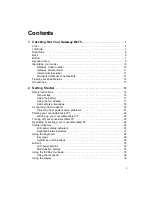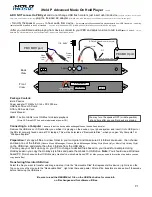
Tracking force is adjusted by moving the tonearm counterweight forward and back on its shaft.
If your cartridge is overly heavy and the counterweight is all the way back, you can order a
heavier weight from your dealer. Half way back is fine as is the middle third of the stub.
The JMW Tonearm does not have a built-in tracking force gauge but we have supplied you with
a quality digital tracking force gauge if we did not mount a cartridge for you.
Place the gauge on the platter (no record).
Loosen the two black thumb screws in the base of the tonearm and raise the arm so it
looks parallel to the platter when it is on the stylus force gauge. When the arm is at the
desired height, lightly tighten the thumbscrews.
If you do not make the arm parallel when doing this you will be between .2 to .4 grams
light or heavy when you are on the record. THIS IS VERY IMPORTANT!!
Set the tracking force according to the cartridge manufacturer’s recommendation. We
recommend always going to the high side of tracking force. High frequency vibrations on
a light-tracking cartridge can cause more damage to the grooves of a record than
running a cartridge at a heavy setting. We usually recommend .1 gram higher than the
max tracking force if you are not using anti-skate (recommended way of setting). This
does not apply to Lyra cartridges that sound best at 1.73 to 1.76 grams tracking force
with or without anti-skate.
Put a record on the platter and using the VTA tower lower the arm so it is parallel to the
record. Now you will be tracking at the force you set and not a lighter force.
Setting the Azimuth
Using the supplied aluminum rod or a fireplace match or coffee stirrer (something light
and about 6” long) place one of them into the groove behind the mounting screws on the
tonearm headshell.

































